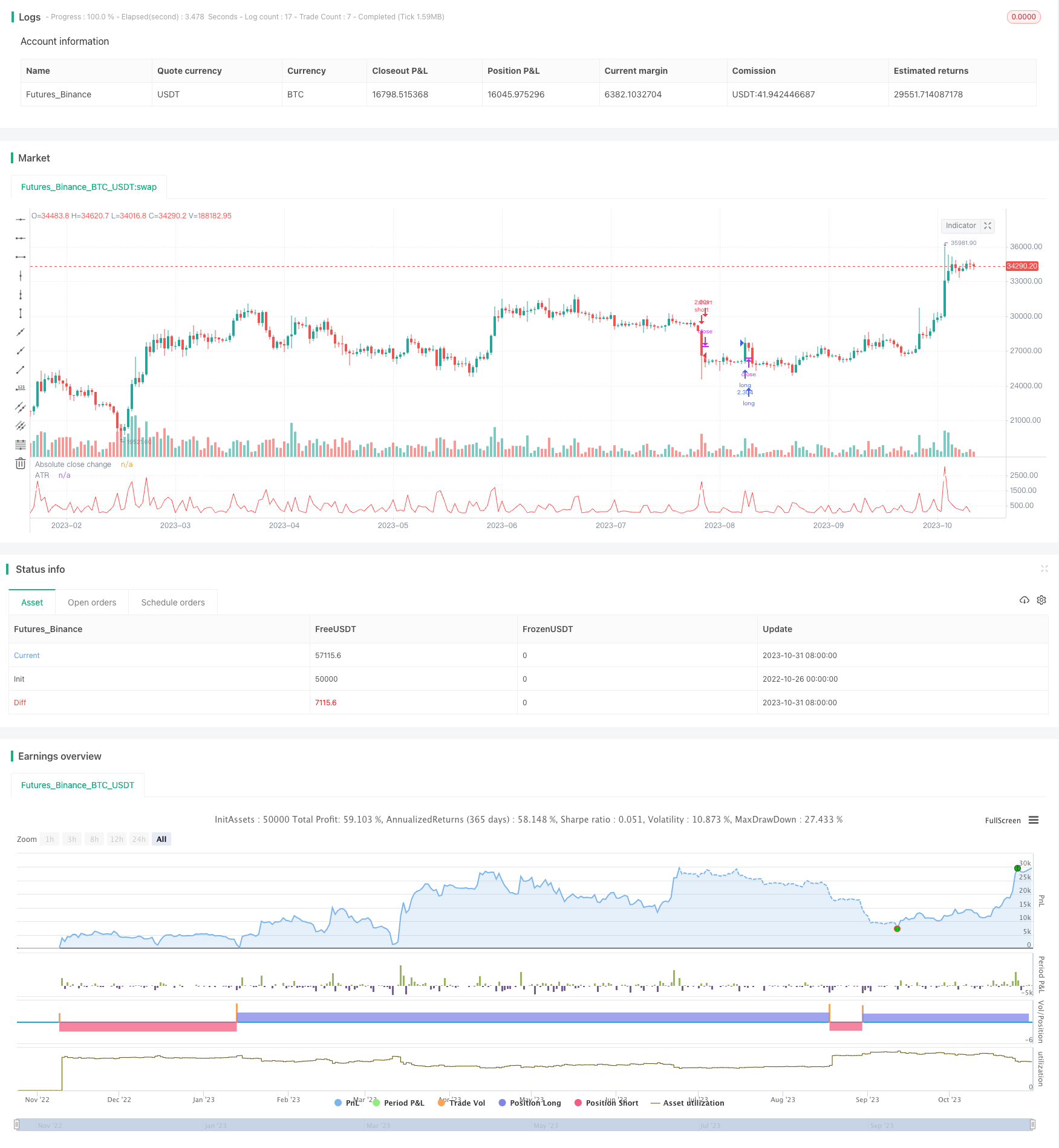
概述
动量突破策略基于理查德·布克斯塔伯在1984年提出的概念,即一旦出现大的波动,市场往往会持续这个方向运行。因此,该策略使用ATR来测量波动性,当收盘价变化超过ATR倍数阈值时,发出交易信号。
策略原理
该策略首先计算ATR指标来测量市场波动性。然后计算每日收盘价变化的绝对值。当收盘价变化超过ATR指标值的若干倍时,产生交易信号。具体来说,如果收盘价上涨幅度大于ATR上轨,做多;如果收盘价下跌幅度大于ATR上轨,做空。
该策略利用ATR指标来动态确定突破阈值。当市场波动加大时,阈值会上升,可以减少错误交易。当市场波动减小时,阈值会下降,可以及时捕捉突破机会。
优势分析
- 动态ATR止损可以有效控制风险,使止损点随市场波动性变化。
- 利用突破产生交易信号,可以抓住市场趋势的轮换。
- 参数优化空间大,可以针对不同品种和周期进行调整。
- 策略思路简单清晰,容易理解和实现。
风险分析
- ATR指标对突发事件反应迟缓,可能错过首次突破。
- 多空平衡性差,只做多或只做空时效果明显好于双向交易。
- 策略参数容易过优化,实际效果可能不佳。
- 交易频繁,交易成本可能较高。
可以考虑结合其他指标筛选交易时机,提高效率。也可以针对品种特点选择更优参数。使用马丁格尔算法等技术控制交易频率。
优化方向
- 可以考虑结合其他指标判断趋势方向,避免错误交易。例如RSI、MACD等。
- 可以添加仓位管理模块,根据市场情况调整仓位。
- 可以针对不同的品种选择最优的参数组合。
- 可以结合机器学习技术自动优化参数。
总结
动量突破策略简单直接,利用突破产生交易信号。ATR止损使其可以适应市场的波动性。该策略依靠参数优化可以获得不错的效果。但也存在一些问题,如错过首次突破、频繁交易等。这需要进一步结合其他技术进行改进,才能在复杂的市场中稳定获利。总体来说,动量突破策略思路清晰,值得进一步研究与应用。
策略源码
/*backtest
start: 2022-10-26 00:00:00
end: 2023-11-01 00:00:00
period: 1d
basePeriod: 1h
exchanges: [{"eid":"Futures_Binance","currency":"BTC_USDT"}]
*/
// This source code is subject to the terms of the Mozilla Public License 2.0 at https://mozilla.org/MPL/2.0/
// © EduardoMattje
//@version=5
strategy("Volatility System", overlay=false, margin_long=0, margin_short=0, default_qty_type=strategy.percent_of_equity,
default_qty_value=100, process_orders_on_close=true, initial_capital=20000)
// Inputs
var averageLength = input.int(14, "Average length", 2)
var multiplier = input.float(2.0, "Multiplier", 0.0, step=0.1)
// Calculations
atr = ta.atr(averageLength) * multiplier
closingChange = ta.change(close, 1)
atrPenetration(int signal) =>
res = closingChange * signal > atr[1]
longCondition = atrPenetration(1)
shortCondition = atrPenetration(-1)
// Order calls
if (longCondition)
strategy.entry(strategy.direction.long, strategy.long)
if (shortCondition)
strategy.entry(strategy.direction.short, strategy.short)
// Visuals
plot(atr, "ATR", color.white, 2)
plot(math.abs(closingChange), "Absolute close change", color.red)